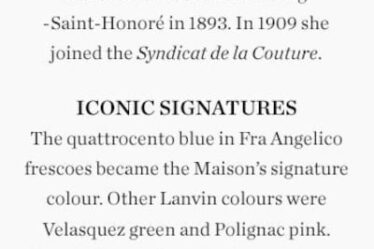
Craftsmanship and exquisite materials are two major selling points for luxury goods, so it was perhaps a little surprising last week to see Louis Vuitton introduce a new style of 3D-printed footwear.
The shoes appeared at the Hong Kong runway show staged by men’s creative director Pharrell Williams, while brand insiders including Louis Vuitton footwear designers Mathias Patillon and Elliott Cox shared closer looks at the clogs, apparently named the LV Cobra, on their Instagram accounts.
“Fully 3D Printed,” Patillon wrote in his post, which tagged Pharrell, Cox, Louis Vuitton and Zellerfeld Shoe Company. The latter has made 3D-printed footwear for brands such as Heron Preston, Kid Super, Rains and Pleasures using a springy thermoplastic polyurethane, or TPU, to create the entire shoe.
Details on the LV shoes are scarce for now, and Zellerfeld said it couldn’t confirm its involvement. Even so, 3D printing is arguably a departure from the usual idea of luxury savoir-faire, the stereotype of which is skilled human artisans hand-stitching or hand-embellishing materials such as silk and leather, not plastic extruded from a printer nozzle according to the instructions of a computer file.
The tension between craft and technology was a recurring theme at BoF’s VOICES conference last week, where guests including Matthieu Blazy, Bottega Veneta’s creative director; Leena Nair, chief executive of Chanel; and Anca Marola, LVMH’s chief data officer discussed the role artificial intelligence will play in fashion in the years ahead. All emphasised the importance of human creators, with Blazy defending the subtle imperfections in hand work as what makes each product unique and special.
Technology, they also acknowledged, doesn’t have to be the enemy of luxury craftsmanship if it helps, not replaces, human creators.
The question is whether technology will remain within those limits as it continues to advance.
The generative AI models on the market are already powerful enough to quickly produce photorealistic imagery, leading brands to begin using it for design and marketing. Versace Jeans Couture is the latest to join in, recently unveiling a new AI-generated campaign.
The fear among many in fashion is that AI and technology will become substitutes for human craft and creativity. Peter Jeun Ho Tsang, who helped develop IFA Paris’ MBA programme in fashion tech, previously told BoF that students were reluctant to engage with AI because they wanted to learn traditional skills such as pattern cutting.
Those who’ve begun using AI tend to have a different view. LVMH’s Marola said she doesn’t see AI ever replacing human designers. Its strength is handling repetitive or tedious tasks, allowing workers to be more efficient. (Of course, that could mean companies are able to do more with fewer junior employees.)
The reality is that technology is already deeply woven into modern fashion. It’s present in everything from the mechanical looms and sewing machines used to weave and stitch together fabrics to the software designers work in to produce digital renderings and virtual samples of their ideas. Even a brand like Bottega Veneta, which uses craft to differentiate itself in the market, leans on technology. One of Blazy’s signature products so far is a pair of leather jeans printed to mimic the effect of worn, faded denim.
“Sometimes we need to use technology to support the craft, but it cannot all come from the machine,” Blazy said at VOICES.
Louis Vuitton itself has promoted technology as part of its idea of craft. In a YouTube video titled “What is Savoir-Faire? | The Art of Craftsmanship,” the brand gave the answer that it’s more than just know-how passed down over generations. Blending images of high-tech machines and workers performing tasks by hand, it offered among its definitions “relentless innovation that has defined more than 160 years of heritage.”
It’s unclear at this stage whether Louis Vuitton’s customers will deem its 3D-printed shoes an innovation worthy of their luxury branding and corresponding price tag, which has yet to be revealed. When Hypebeast shared video of the shoes on Instagram, reviews from commenters were generally not favourable, though they may not be representative of Louis Vuitton’s core audience. A Louis Vuitton spokesperson did not return a request for comment.
Brands may increasingly find themselves needing to explain to customers how they’re balancing human and machine, as well as finding ways to allow craft and technology to support one another, rather than coming at one another’s expense.
Disclosure: LVMH is part of a group of investors who, together, hold a minority interest in The Business of Fashion. All investors have signed shareholders’ documentation guaranteeing BoF’s complete editorial independence.



